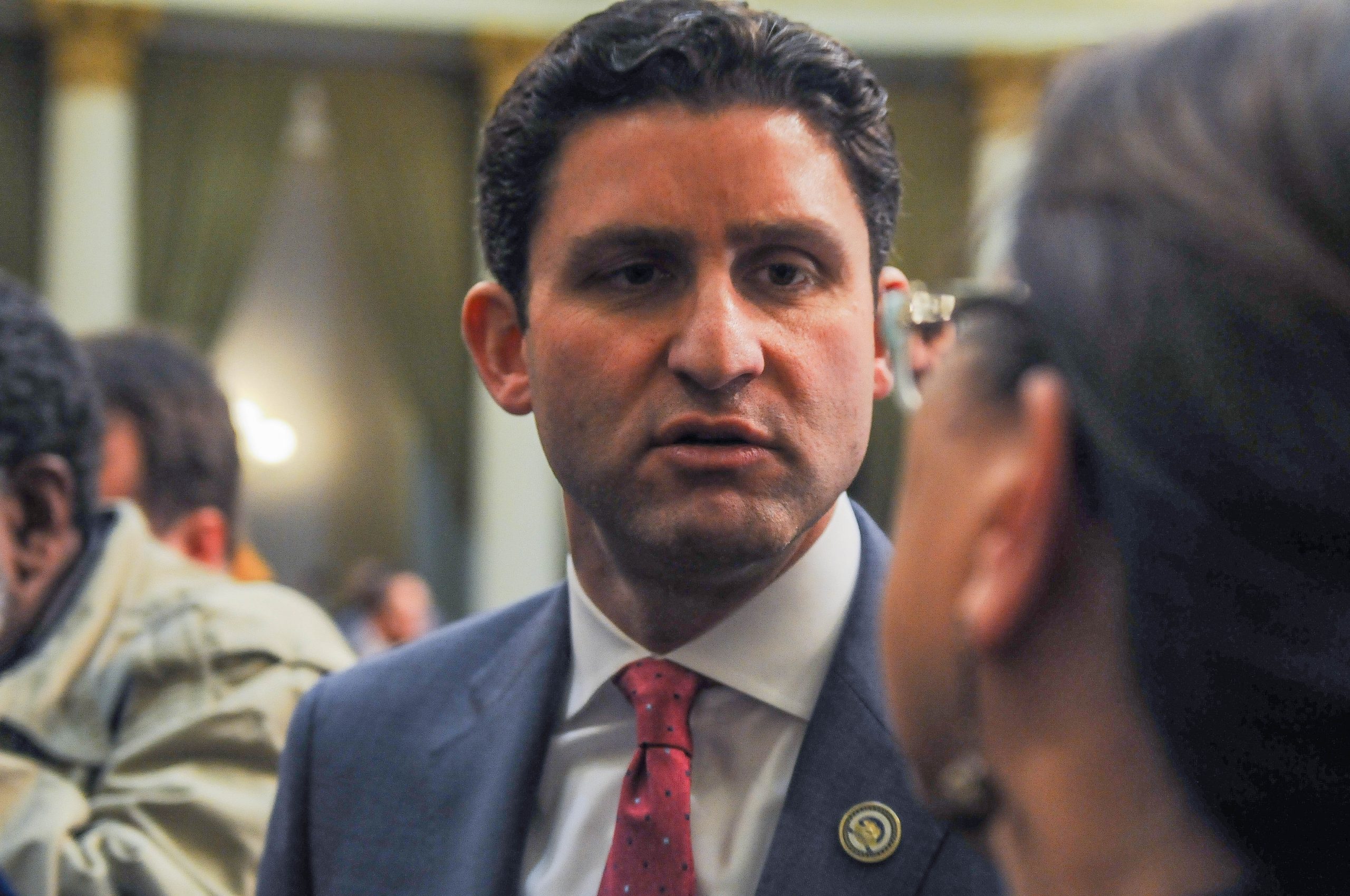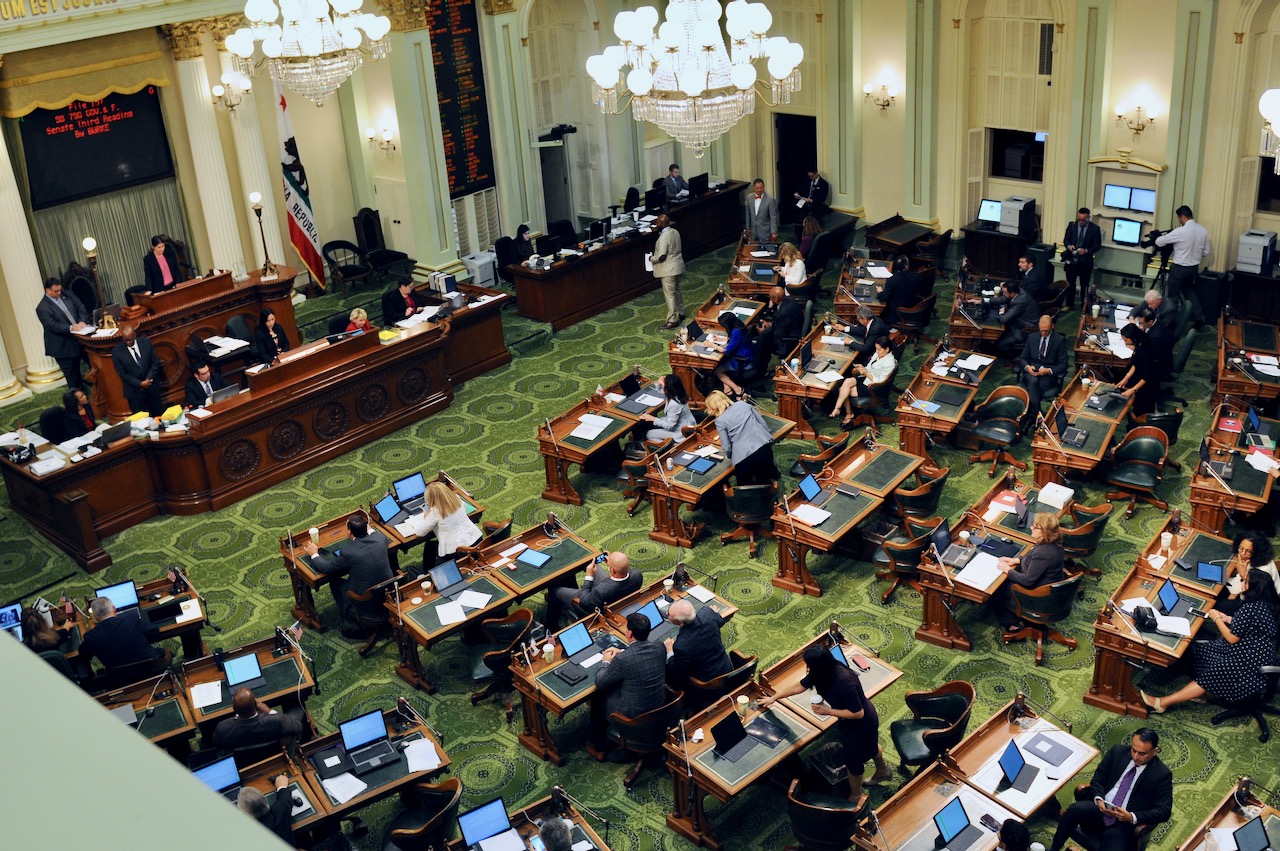
CalOSHA field inspectors. (Photo: dir.ca.gov)
CalOSHA Throws Pandemic Shade
CalOSHA issued 2,096 pandemic-related citations with a fine ranging from $350 to $18,000 per violation
By Thomas Buckley, October 6, 2023 2:30 am
Between the end of August, 2020 and December, 30, 2022, a California business was cited for a “COVID-19 Related Violation” every 9 hours and 48 minutes.
Overall, in less than two-and-a-half years, CalOSHA issued 2,096 pandemic-related citations with a fine ranging from $350 to $18,000 per violation.
And what were businesses being cited for? That runs the gamut from not having plexiglass between customer and employee, not having written masking policies, and, of course, not providing shady break areas that would allow for employees to remain properly “socially distanced.”
Retail operations, health care facilities – including nursing homes – factories, other government agencies, food processing plants, and farms were among the targets.
As to the farm cites, a number involved shade, or lack thereof, at least the socially distanced variety. And what constitutes shade? Here’s CalOSHA’s definition:
Shade means blockage of direct sunlight. One indicator that blockage is sufficient is when objects do not cast a shadow in the area of blocked sunlight. Shade is not adequate when heat in the area of shade defeats the purpose of shade, which is to allow the body to cool. For example, a car sitting in the sun does not provide acceptable shade to a person inside it, unless the car is running with air conditioning. Shade may be provided by any natural or artificial means that does not expose employees to unsafe or unhealthy conditions and that does not deter or discourage access or use.
And what is the actual violation? In a number of cases it read (swap out the crop) thusly:
“Prior to and during the course of the Division’s inspection, including, but not limited to, on July 10, 2020, the employer failed to provide adequate shade for its employees who were working outside weeding and planting strawberries, in that the employer did not furnish sufficient shade to enable employees using the shade during breaks/meals to maintain a physical distance from coworkers of at least six feet in all directions, thus exposing the employees to unhealthy conditions relating to COVID-19 and deterring or discouraging use of the shade.”
Yup – employees could not socially distance in the shade so they wouldn’t want to use the outside shade structure and/or trees (it seems in one case the trees were not far enough apart or big enough or, well, whatever.)
Note – a number of cited businesses were contacted for this story – few returned calls and, in the case of one that did, declined to comment. The reason for this is readily apparent, of course: why would any company say anything publicly that could even be perceived as negative about CalOSHA?
In other words, they declined to taunt the gorilla.
CalOSHA did not decline to comment but simply seemingly couldn’t get its act together to do so…probably.
The agency was asked the following:
-Of the 2,096 citations, how many were successfully appealed?
-What was the total amount in fines levied and collected?
-Were Cal OSHA’s blanket covid standards appropriate considering the virus overwhelmingly impact the elderly and unhealthy?
-If a business had an employee die from covid off-site, as I would presume most would, how could the business be held responsible for reporting that death?
-I see a number of nursing homes were cited – did that exclusively involve workers or were patients included?
-Did CalOSHA take into account jobs that by definition had people working within 6 feet of one another?
The response was basically “give us a few days” which eventually turned into: “Unfortunately, it looks like the DOSH people researching the numbers for you are out of the office today. We’ll let you know when we have something for you. Thank you.”
That was two weeks ago.
The majority of the citations (I did not check all of them and those I did were randomly chosen) reviewed involved paperwork issues, such as not having proper “educational materials” on hand so employees could see in writing the pandemic-related workplace strictures. This is a relatively typical example:
“Prior to and during the course of this investigation, including but not limited to, on June 16, 2020, the employer failed to implement and maintain an effective Injury and Illness Prevention Program in that the employer failed to provide effective training and instruction readily understandable to all its employees regarding the new occupational hazards of COVID-19, including but not limited to, training on how the virus is spread and measures to avoid infection, the signs and symptoms of infection, and the employer’s procedure to control transmission in the workplace.”
Other citations involved farms – you know, where people work outside – not being six feet apart as they picked the crop and not being required to wear properly-fitted face coverings while picking, such as this case:
“Prior to and during the course of the inspection, including, but not limited to, on September 5, 2020, the employer failed to prevent harmful exposures of employees to infectious or potentially infectious airborne particles by ensuring the use of engineering controls, such as face coverings, to limit the release of infectious particles into the air when a person breathes, speaks, coughs, or sneezes to prevent the spread of COVID-19.”
And a horse racetrack (name deleted from citation quote below) was similarly cited:
“Prior to and during the course of the inspection, respirators were necessary at the workplace at (business) as part of the COVID-19 safety & prevention program to protect the health of all employees. (Business) was responsible for the safety and health conditions at the site and failed to ensure that the employees of the various trainers/employers required to use a tight-fitting facepiece respirator were fit-tested prior to their initial use of the respirator while working at (racetrack.).
It is not known if this citation involved not having tiny masks for jockeys or big masks for the horses themselves.
CalOSHA also cited inside workplaces – one nursing home was cited for not properly training its employees on respiratory safety – actually, that one makes sense considering people who tested positive for COVID were for quite some time intentionally put back into California nursing homes.
But others strained credulity – one mushroom farm was cited for having “failed to effectively implement its COVID-19 Prevention Program by ensuring that employees working in the Harvesting Rooms were separated from other persons by at least six feet in all directions at all times.”
In the case of UCLA, the school was cited for a number of violations, some specifically involving a facilities management locker room:
“The employer did not effectively identify or evaluate workplace hazards relating to COVID-19 in the Facilities Management HK Unit, including, but not limited to:
a) The failure to provide or ensure the use of face coverings to prevent the release of infectious
particles into the air when persons are breathing, speaking, coughing, or sneezing,
b) The lack of physical distancing between employees in the HK Unit Locker Room, and
c) The failure to adequately clean and sanitize commonly used surfaces in the HK Unit Locker
Room. [8 CCR 3203 (a)(4)].”
Considering some of the sights seen in men’s locker room, maybe physical distancing is not such a bad idea, though the concept of having to wear in the mask in the shower (presumably) seems a bit much.
A number of violations involved a business – from Google to car dealerships – not reporting the death of an employee from COVID. Since presumably the employee didn’t drop dead at their desk, it seems CalOSHA demanded that businesses tell them when someone got sick and/or died of COVID, no matter where, no matter when:
“Prior to and during the course of the inspection, including but not limited to, on September 04, 2020, the employer failed to immediately (immediately means as soon as practically possible but not longer than 8 hours after the employer knows or with diligent inquiry would have known of the death or serious injury or illness. If the employer can demonstrate that exigent circumstances exist, the time frame for the report may be made no longer than 24 hours after the incident) report to the Division of Occupational Safety and Health the serious illness suffered by an employee who was hospitalized with Covid-19 on or about September 02, 2020 and subsequently passed away on September 04, 2020.”
This same business was also cited for failing to prevent a physical impossibility. i.e. making sure its employees stayed six feet apart while sitting in a truck:
“Instance 1: Employer failed to identify or evaluate workplace hazards related to COVID-19 that affected its employees in the following way:
(a) The lack of physical distance of at least 6 feet in all directions among employees who travel inside a work truck to work sites [3203(a)(4)].”
Well, if they were in the truck at least they were in the shade…maybe
“Maybe” because CalOSHA doesn’t count being in a vehicle as shade unless the air conditioner is on.
And if you happen to have a great deal of time to kill, here’s the website with the citations: https://www.dir.ca.gov/DOSH/covid19citations.asp
- Benefit Fraud Problems and Solutions - November 7, 2024
- A Little Exit Poll - November 5, 2024
- Tomorrow’s Headlines Today! - November 5, 2024








CalOSHA completely over-stepped their authority – which is really on us, the citizens, for letting them get away with it. Their mask rules for COVID are completely circular, incoherent, and contradict the relatively sound science of industrial hygienists over the past few decades who’ve determined what does and DOES NOT work to stop an aerosolized virus from spreading.
I have cited California Health and Safety Code left and right to people it really does not have an impact. The only thing people respond to are magic spells and physical violence. We are ruled by our own worst selves. Kinda sucks. There are plenty of freedom fighters for the world that died in 2020-2022; we are out there.
CalOSHA needs to be put back in its corner.
Having dealt with OSHA inspectors who stepped outside their jurisdiction, yes, Cal/OSHA seems to have its share of Pecksniffian morons who get off on exerting power over their regulated community (and even those outside their regulatory purview).
And the pushing of masks as some legitimate respiratory protection from a virus, well, follow the advice of the 5th edition of the Fundamentals of Industrial Hygiene: masks are not proven to be of much value.